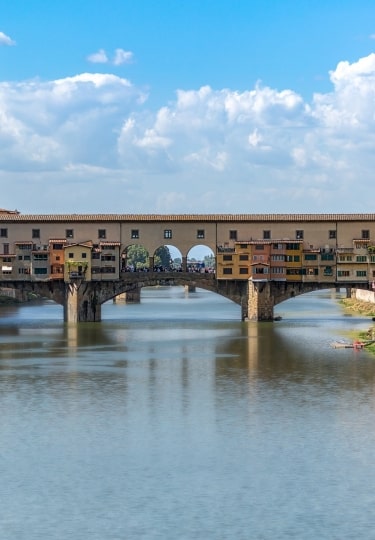Two days in Florence is a must for any Italophile. The Tuscan capital is, for many, the zenith of classical Italian architecture. Its skyline is one of the most recognizable in Italy, with the pink-roofed Duomo rising from a sea of terracotta rooftops like a prototype DaVinci zeppelin.
Florence is a city with a grand cultural legacy that stretches back to the medieval Medici family, one of Europe’s most powerful merchant dynasties. The Medicis built Florence up to become the jewel of the Renaissance, and much of that artistic heritage remains intact amid the historical center’s narrow streets, sculptures in places where other cities would have trees or streetlights.
Beyond the Michelangelo sculpture, the Giotto frescoes, and the Brunelleschi architecture, there’s also fashion. Florence is the home of Ferragamo, Dolce & Gabbana, and Cavalli, to name a few. With two days in Florence, it’s possible to revel in the fashion, be dazzled by the art, and be seduced by the lifestyle.
Read on to learn what to see during a two-day itinerary in Florence.
9 a.m.: Tour Pisa’s Square of Miracles
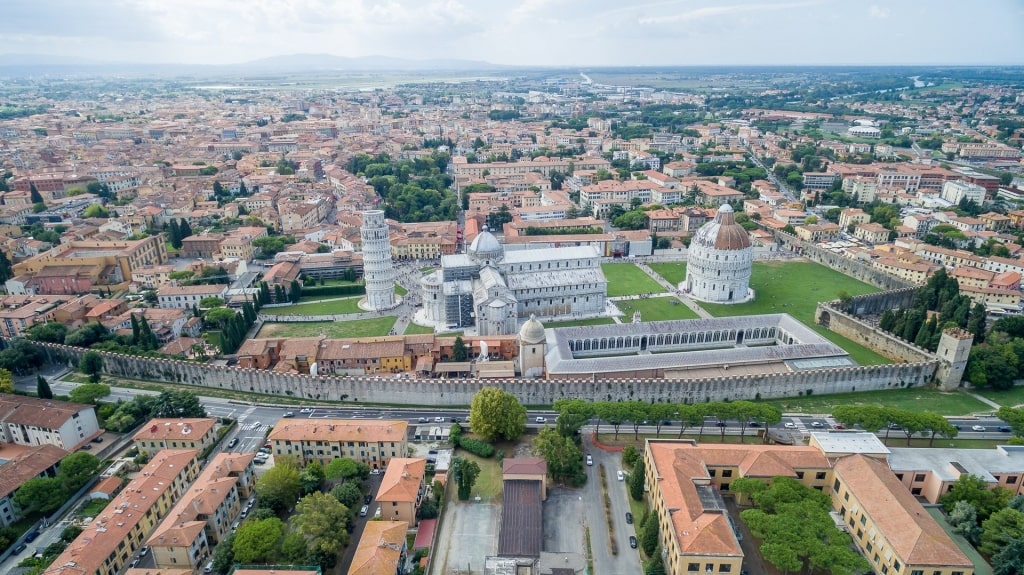
Square of Miracles
While two days in Florence is easily filled by what the Tuscan capital has to offer, it’ll likely be irresistible for you not to make a stop at the coastal city of Pisa en route. Most entry points into Tuscany are in or around Pisa, that city famous for its intriguing leaning tower.
You’ll find that tilted triumph in the aptly-named Square of Miracles (Piazza Dei Miracoli). The square, with its quartet of shining medieval buildings, looks like some kind of celestial campus. Alongside the Leaning Tower, you’ll find the Old Cemetery (Camposanto), the Baptistery (Battistero), and Pisa Cathedral (Cattedrale di Pisa).
Despite only one of these structures being instantly recognizable for most visitors, each of the buildings that make up this UNESCO World Heritage Site is a treasure. The 11th-century cathedral, a many-pillared edifice in snowy marble, is an elegant blend of Byzantine, Islamic, and Lombard architectural styles that gave rise to the “Pisan Romanesque” style.
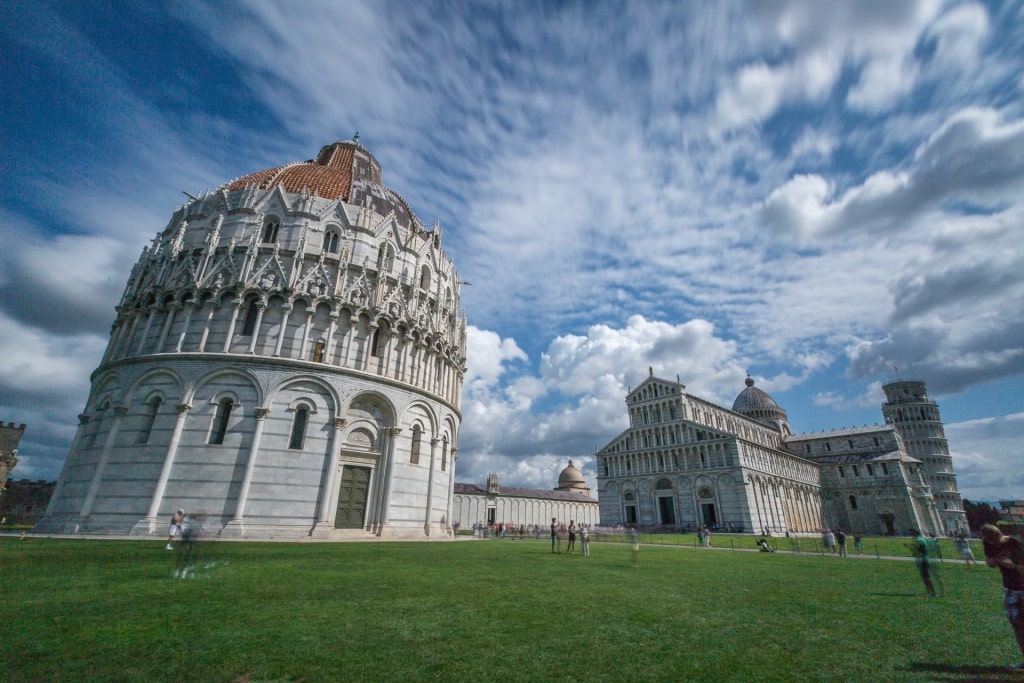
Baptistry
In front of the cathedral is the Fabergé-egg-like Baptistry, the largest structure of its kind in the world. Beneath its high dome you’ll be drawn to the pulpit, Pisano’s masterpiece of Italian Gothic sculpture that’s considered the artistic starting point for the Renaissance.
Meanwhile, the monastery-shaped Old Cemetery is essentially a museum of art and archaeology, featuring Roman sarcophagi and restored pre-Renaissance frescoes.
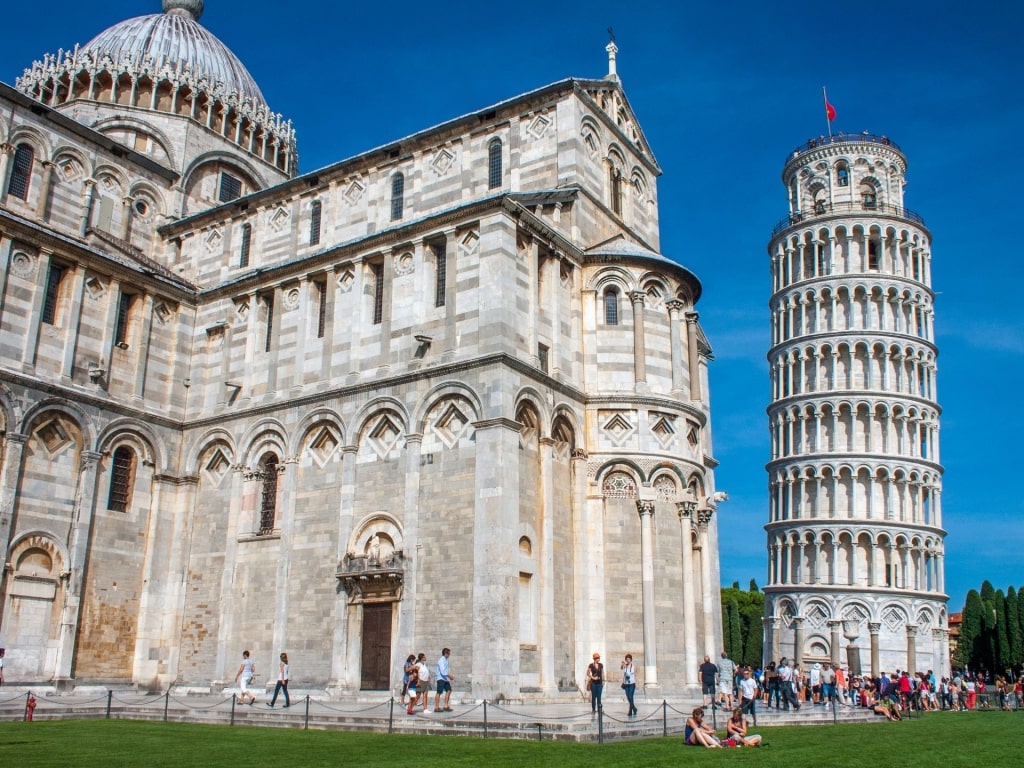
Leaning Tower of Pisa
But then there’s that tower, which seems to be almost peeking around the cathedral to try and catch your eye. Looking a little like an overambitious wedding cake, the ornate 12th-century campanile was built on overly soft ground and sank beneath its weight. If you’re feeling trusting, it’s possible to ascend to the top for a bird’s eye view over the Piazza Dei Miracoli.
With Pisaro’s pulpit adding context to your forthcoming art odyssey, it’s on to Florence, the capital of the Renaissance. In contrast to the spacious Piazza Dei Miracoli, Florence is much more tightly wound, its treasures woven into the fabric of the city’s cobbled streets, with everything in the shadow of the Duomo.
Read: The Ultimate Guide to Art in Florence
11:30 a.m.: Explore Florence’s Historic Center
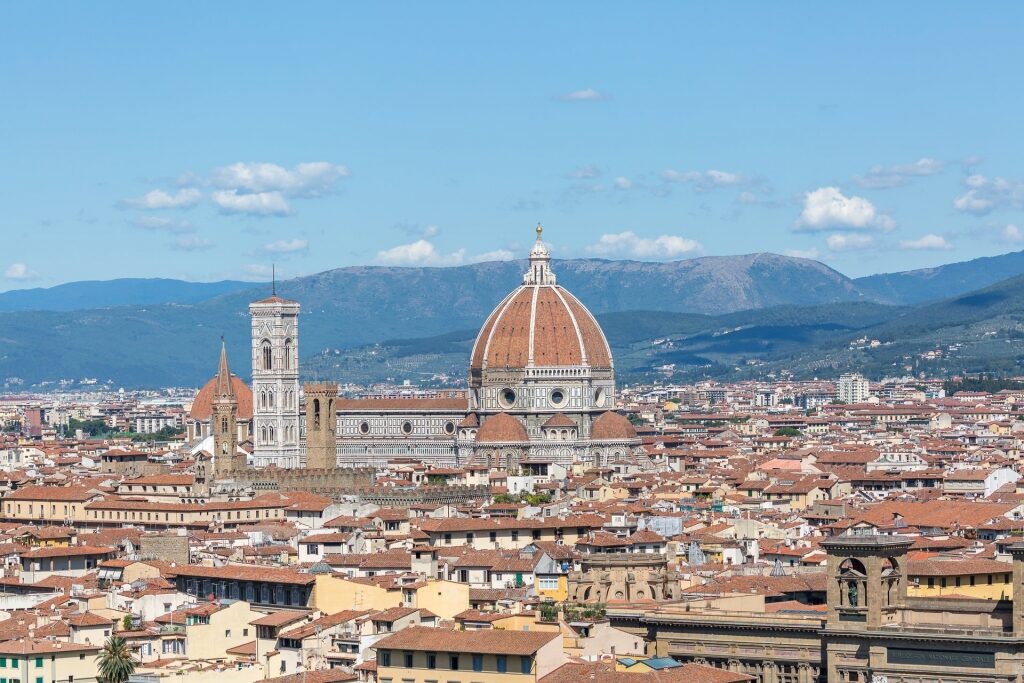
Historic center
On any Florence itinerary, two days will only leave you wanting more. You could easily spend your time immersing yourself in the art, culture, and medieval machinations of the city’s historic center (Centro Storico) and still have plenty to experience on a return visit to one of Italy’s most beautiful cities.
Demarcated by the remains of the city’s 14th-century walls, the historic center’s density of Renaissance-era treasures is, for the uninitiated, truly mind-boggling. Among the piazzas and medieval streets, you’ll find the tangible results of 700 hundred years of cultural and artistic development as accessible to passers-by as the gelateria on the corner.
There’s a lot to see, so take your time. As you explore, the scent of leather in the air as you pass the many stalls selling bags, purses, and belts, you’ll soon find yourself looking up at the immense, graceful Duomo Santa Maria del Fiore (or “Duomo” to its friends).
You can look down upon the Duomo—one of the most beautiful churches in the world—as well. Head up the 463 stairs into architect Brunelleschi’s innovative self-supporting dome for a view over the cathedral’s tiled roof, the city, and the verdant hills beyond.
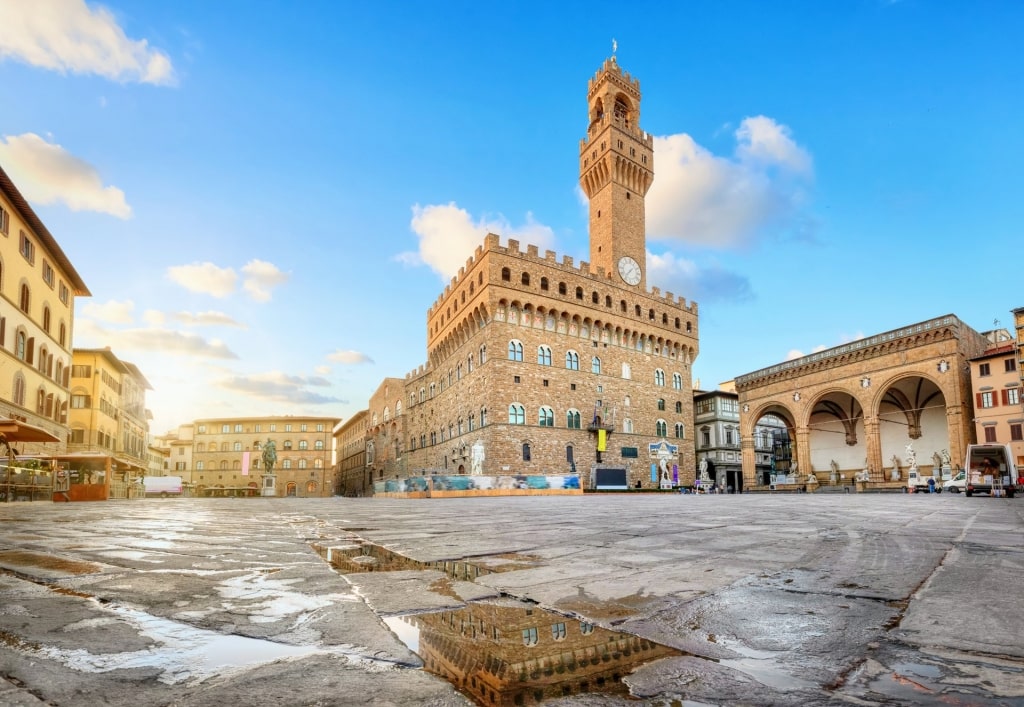
Piazza Della Signoria
The historic center’s artistic heart is Piazza Della Signoria, watched over by the domineering Palazzo Vecchio, the center of Florentine political life since the 1300s. The sculptures on display here are loaded with symbolism: Cellini’s Perseus aggressively holding aloft the head of the Medusa, or the defiant stare of Michelangelo’s David (this one’s a copy; the original is in the Accademia Galleria). Ammannati’s Nettuno, meanwhile, is representative of the ruling Medici family’s success at sea.
Beneath the wide arches of the Loggia Dei Lanzi, a raised portico on the square, you’ll find further creations so lifelike that you expect them to twitch beneath the attentions of a resting pigeon.
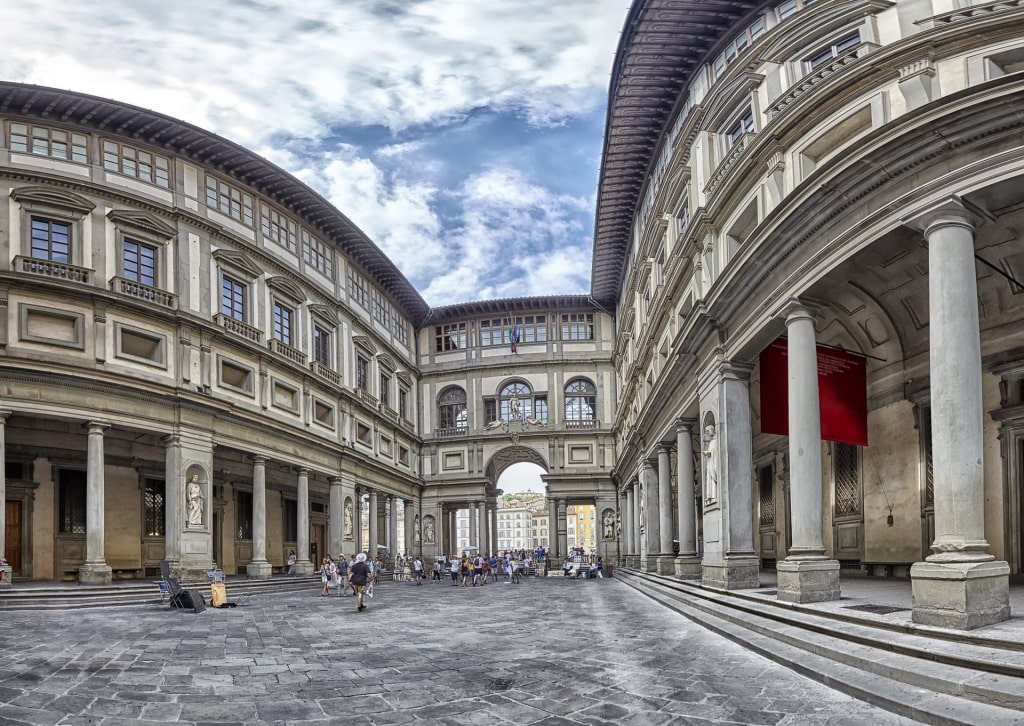
Uffizi Gallery
While you’ll want to find your way into the stately Palazzo Vecchio or see the Botticellis and Caravaggios at the rarefied Uffizi Gallery, it can be easy to experience high art oversaturation. Instead, take a pause with a walk across the Arno river towards the Piazzale Michelangelo. This square offers fantastic elevated views across the elegant skyline that Florence is known for, punctuated by the Duomo, fortified palaces and bell towers.
Read: Best Museums in the World
1:30 p.m.: Lampredotto Sandwiches at Mercato Centrale
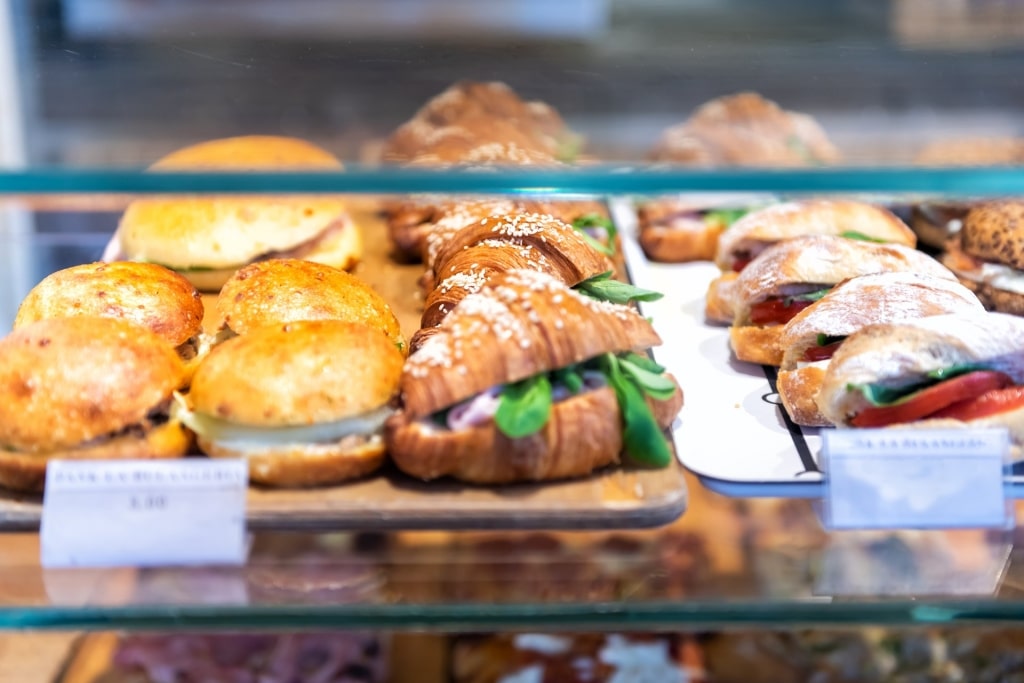
Mercato Centrale
All that art appreciation during your two days in Florence can work up an appetite. The green-roofed Mercato Centrale, a former fish and meat market transformed into an Italian food hall of dreams, is your next stop.
Reopened after a top-to-toe renovation in 2014, the Mercato Centrale has become a temple to Italian food culture and the passions of the people who produce it. This is one of the Florentines’ favorite lunch spots. The green-roofed building dates back to the late 19th century when it was constructed to hail the city’s brief period as the new capital of a freshly unified Italy.
You’ll find the entrance into the Mercato beside the bustle of the San Lorenzo leather market. Once you’ve taken the escalator to the first floor, you’ll be engulfed in delicious aromas from the kiosks within. The masterminds behind this iteration of the Mercato created it not just to show off the best Tuscan cuisine and produce, but Italy as a whole.
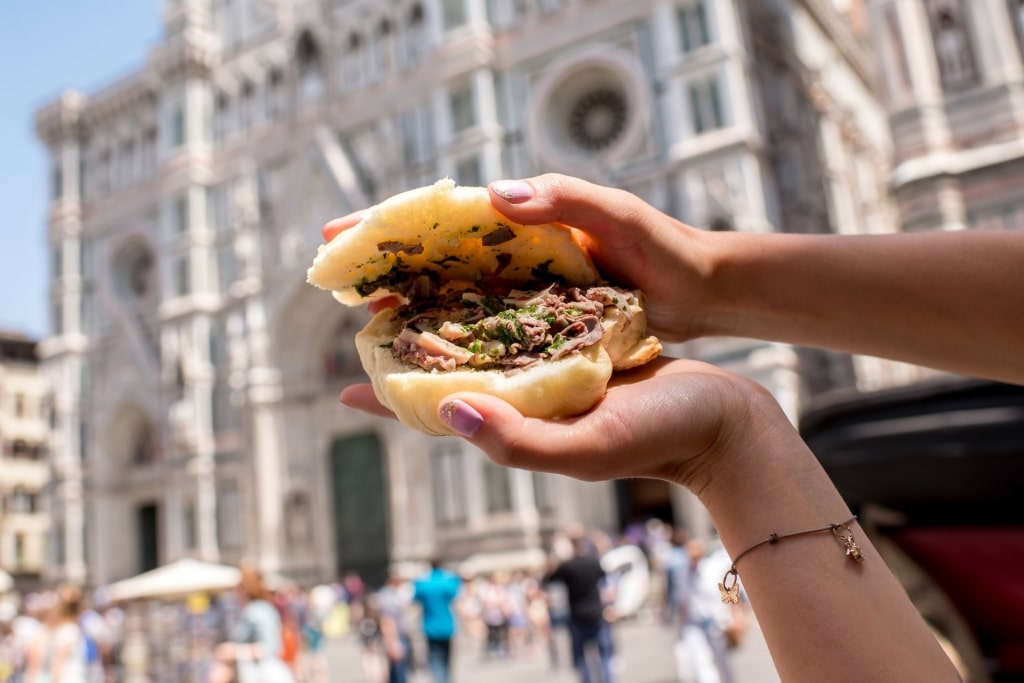
Lampredotto
As such, you’ll find buffalo mozzarella trucked in fresh and cool from a farm near Naples; World Pastry Champion Cristian Beduschi’s life-changing gelato; and lashings of lampredotto, or Florentine tripe. This is the escargot of Florence, the local delicacy you just have to try. Historically, it’s the authentic Florentine dish of the city’s working-class that has a place today in every local’s heart and stomach.
Lampredotto is typically slow-cooked with tomato, onion, parsley, and celery and served in a crusty roll. But if offal is a little too authentic for your tastes, there’s also a superb pizzeria on-site, using the aforementioned Neapolitan mozzarella on its award-winning margheritas. Or try traditional Tuscan ragu at Tosca.
The Mercato is about more than just lunch, though. Learn how to bake cantucci, crunchy Italian almond cookies, or taste olive oil at one of the classes held regularly at the venue.
3 p.m.: Fashionably Florentine
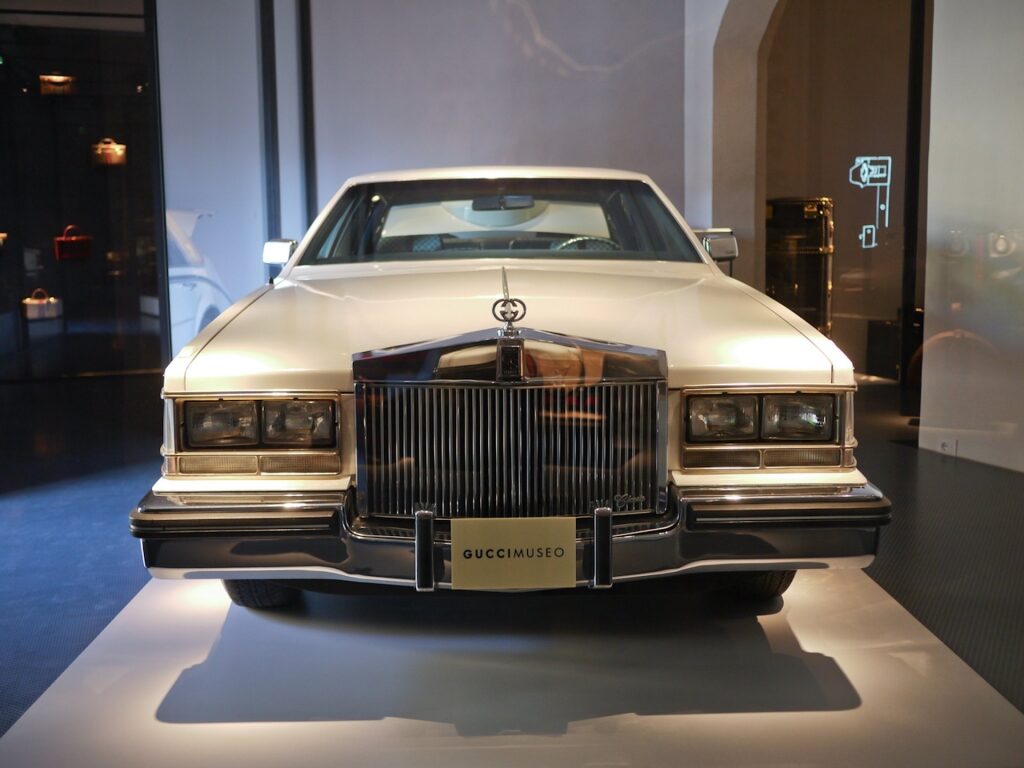
Gucci Museum Photo by Mathieu Lebreton on Flickr, licensed under CC BY 2.0
High art and high fashion are equally admired in the Tuscan capital. You can explore both during a two-day itinerary in Florence, and it’s helpful if you have limited time that museums of both kinds are often found rubbing shoulders.
First, return to the Piazza Della Signoria. While everyone else is marveling at the statues, head around the side of the Palazzo Vecchio to Palazzo della Mercanzia and the Gucci Museum within. Opened in 2011 to celebrate the iconic brand’s 90th anniversary, Gucci is as Florentine as lampredotto, with a family history nearly as successful and fraught as the Medicis.
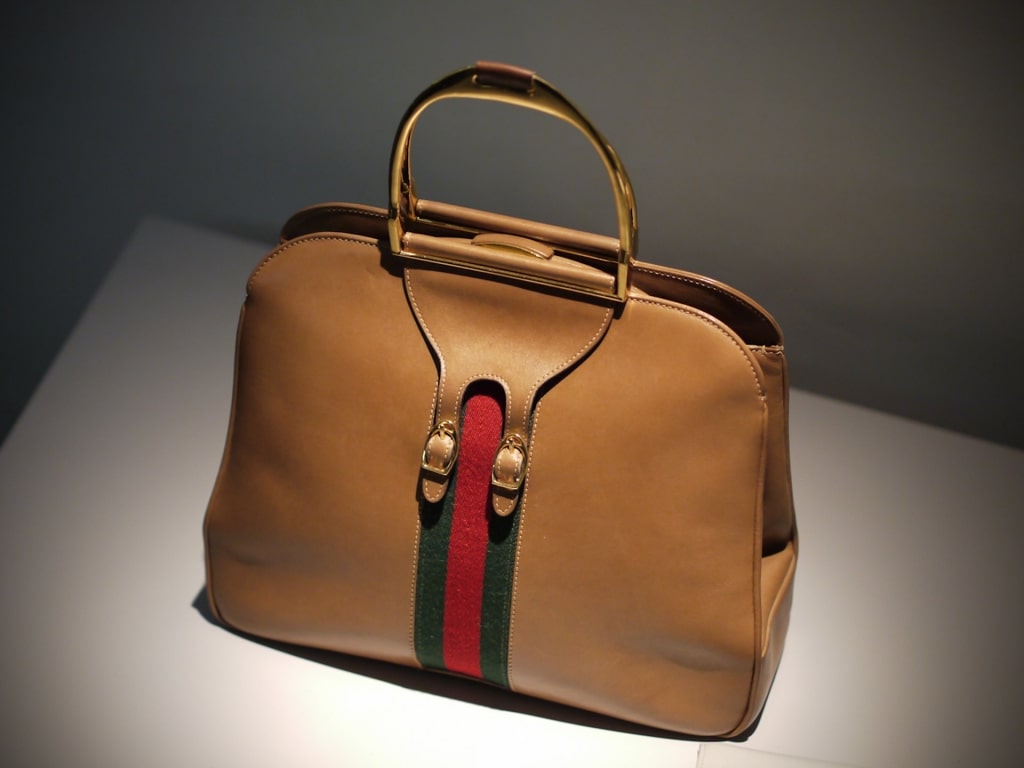
Gucci Museum Photo by Mathieu Lebreton on Flickr, licensed under CC BY 2.0
Within, you’ll find three floors of fashion history illustrated by stylish exhibits. Divided into thematic areas expounding on various pillars of the Gucci brand, you’ll be mesmerized by handbags here, A-lister red carpet dresses there.
Time your visit right, if you weren’t tempted in the Mercato, and you can sit down for an opulent lunch at the Massimo Bottura Gucci Osteria, also located in the Palazzo.
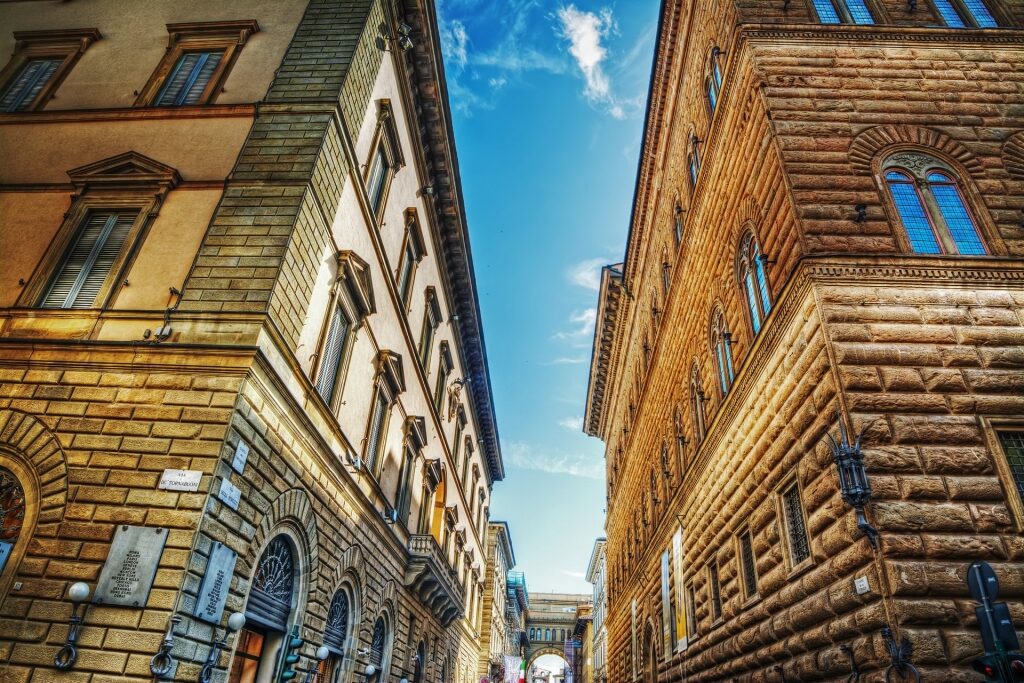
Via de Tornabuoni
From Gucci, in reverse alphabet, to Ferragamo. The celebrated Italian shoemaker’s museum is found in the fashion brand’s headquarters in the high-end shopping district of Via de Tornabuoni.
The Florentine museum within is engagingly eclectic, concerned with the progress of Salvatore Ferragamo but also including a worthwhile sub-narrative concerning the Palazzo Spini Feroni in which you’re standing, previously the 13th-century haunt of a family of ambitious medieval bankers.
Alongside the history, you’ll admire wooden models of Ingrid Bergman’s flat feet, Marilyn Monroe’s custom-made stilettos, and a boutique gallery of Futurist paintings. Whimsical, compact, and delightful.
Read: Best Shopping Cities in Europe
7 p.m.: Passeggiata on the Ponte Vecchio
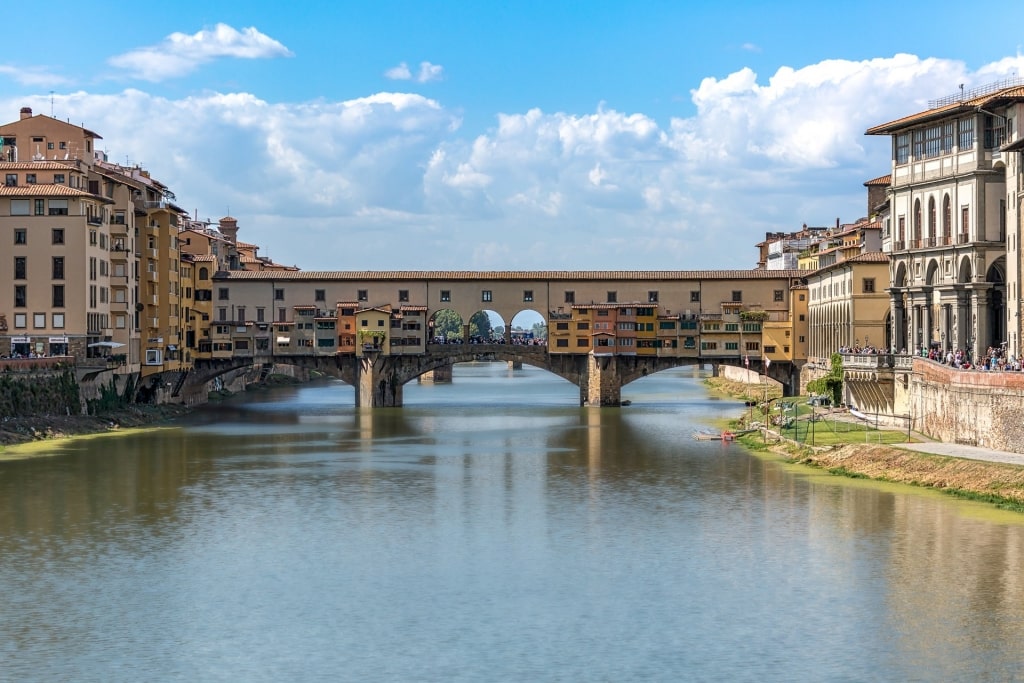
Ponte Vecchio
The 10th-century Ponte Vecchio is the city’s oldest bridge and a symbol of Florence. A magnificent jumble of shops strung across the river Arno’s narrowest point, the Ponte Vecchio was the only Florentine bridge not to be destroyed by the retreating Germans in WWII.
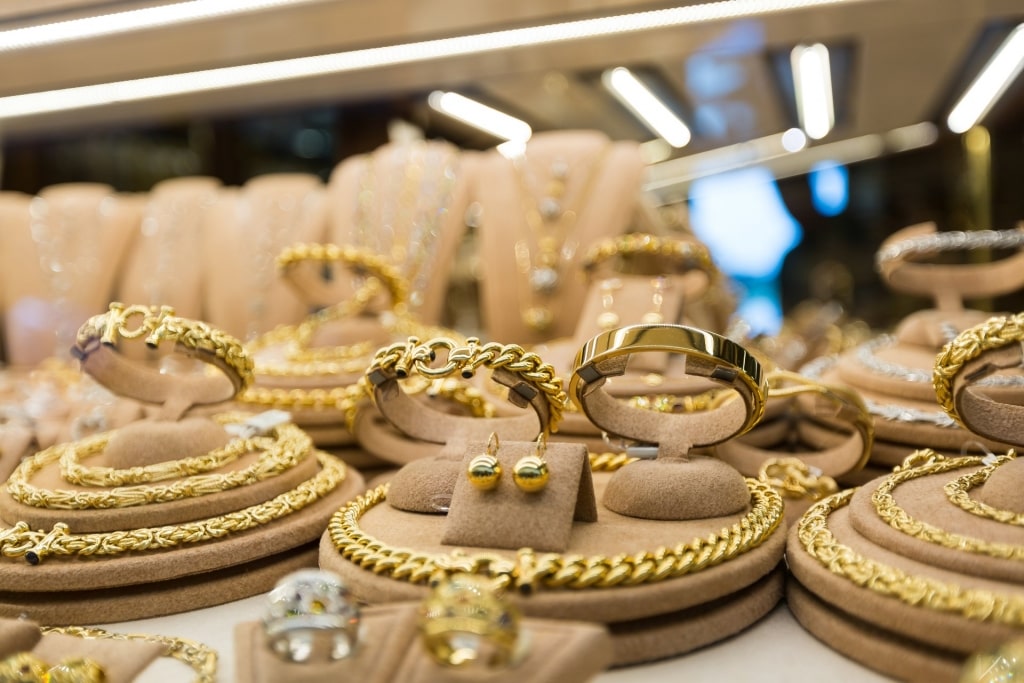
Ponte Vecchio
After being rebuilt in 1345 following a destructive flood, it has remained intact. You’ll find a dense warren of jewelry shops and goldsmiths given architectural breathing space by a central trio of elegant arches. Concealed above the shops is the Vasari Corridor, a hidden passageway that allowed Florence’s rulers to cross the river unseen from Palazzo Vecchio to the Palazzo Pitti.
In high season, the Ponte Vecchio, by day, can become something of a bottleneck of humanity, although it’s a must on a two-day itinerary in Florence. Wait until evening, when the waters of the Arno are flecked with the pink and gold of the setting sun, and you’ll find it flowing easily with the citizens engaged in their evening passeggiata, or daily stroll ritual.
Join them as the shops shutter their windows and the stall vendors latch close their trunks. Head away from the historic center and into San Niccolò’s trendy streets with its vintage ateliers and authentic Florentine feel. Find a table on the terrace of buzzy Il Rifrullo and settle in for one of the city’s best aperitivos.
Day Two
9 a.m.: Meet David at the Accademia Gallery
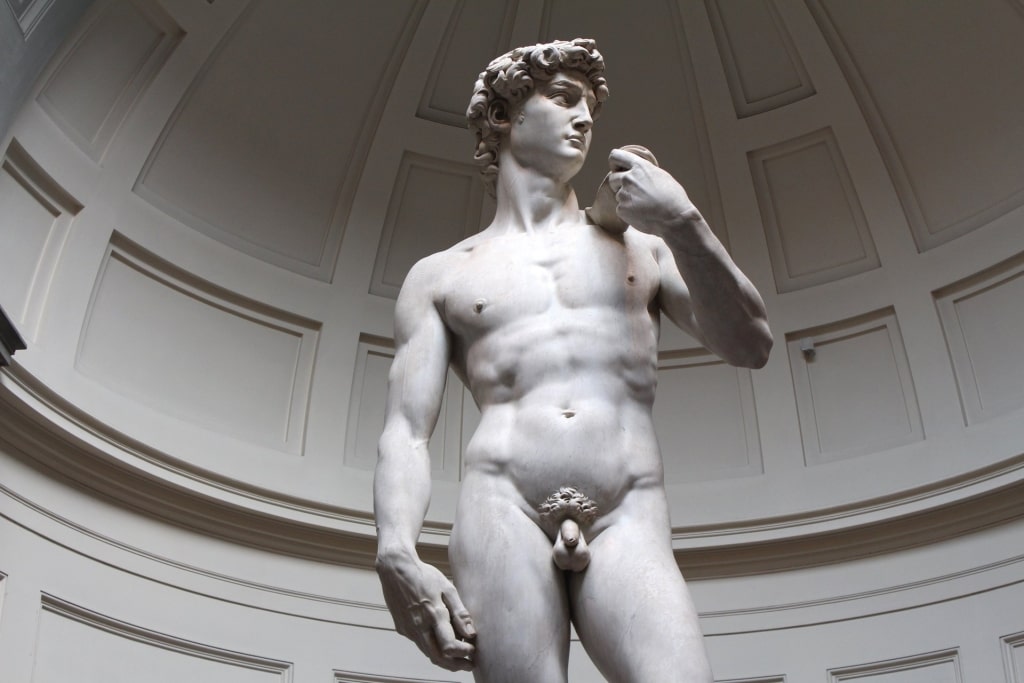
Accademia Gallery
The Accademia Gallery may not be as familiar a name as the Louvre or MoMA, but its star artwork is the envy of all other cultural institutions: Michelangelo’s David.
The gallery is found a few minutes’ walk north of the Duomo on via Ricasoli. Inside, its rooms of tall grey pillars and cream-colored busts are a delight to explore. If you’d rather have some guidance, there’s a series of suggested visitor trails that take in paintings, antique musical instruments, and other fascinating works.
However, all roads lead to the light-filled alcove where David stands, looking off to his left, sling resting over his smooth shoulder. Even after the many masterpieces found inside and out in this Renaissance capital, David dazzles.
11 a.m.: Pay Your Respects at Santa Croce
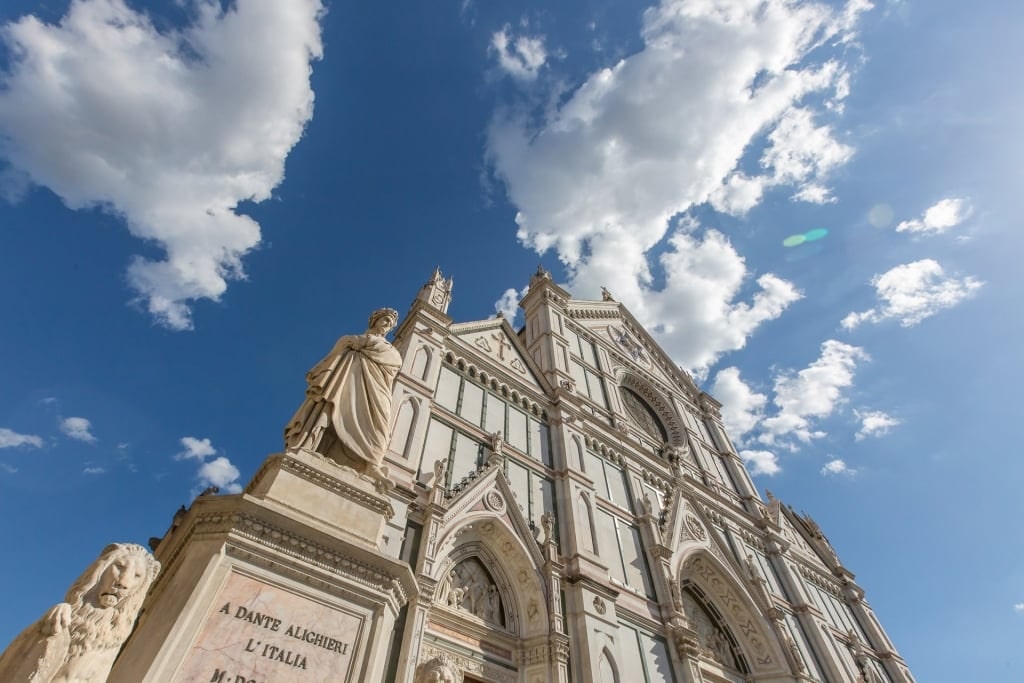
Basilica of Santa Croce
Once you’ve seen David, make your way to the Basilica of Santa Croce where you can, in a way, meet his creator. About 15 minutes’ walk towards the Arno, you’ll come to the largest Franciscan church in the world, Santa Croce.
Santa Croce is, as much of Florence’s treasures, a harmonious collaboration of world-famous artists. Donatello created the statue of Jesus on the cross, as well as the intimate Annunciation Relief, while Giotto was responsible for the lion’s share of the frescoes found within, most famously, The Death of Saint Francis.
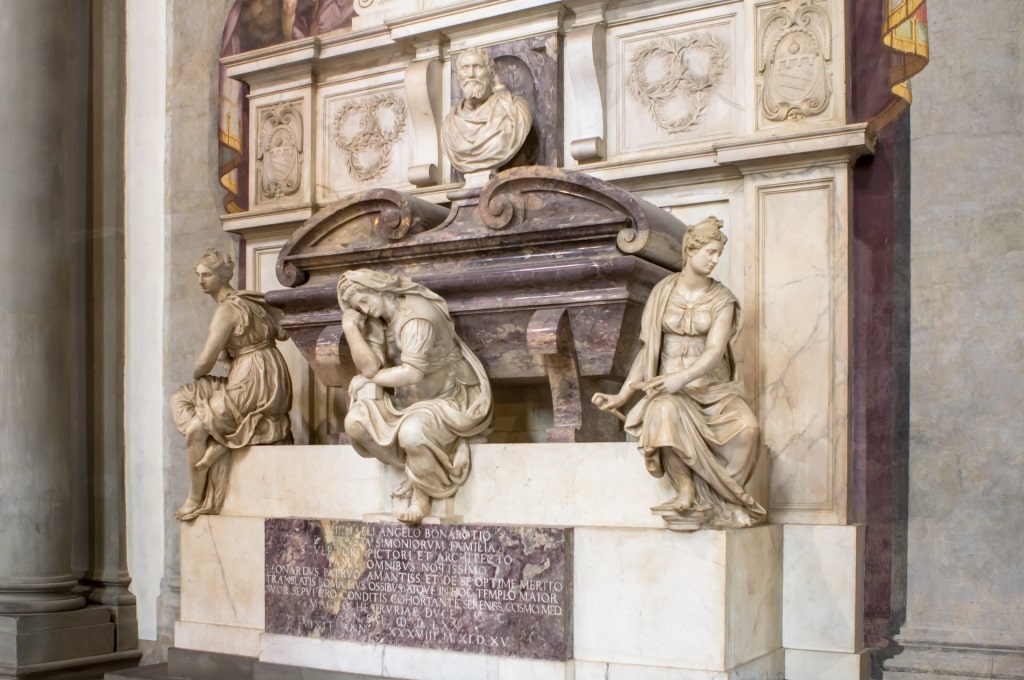
Basilica of Santa Croce
However, Santa Croce is not known as the “Temple of the Italian Glories” for the sublime artwork. Instead, it’s a title conferred to the church as it’s the burial site of a number of Italian luminaries. Besides Michelangelo resting in the elaborate tomb created by Vasari, Galileo, Machiavelli, and Rossini are also buried in similar pomp within the sanctified walls.
There’s also a sarcophagus intended for local boy Dante, but due to political difficulties at the time, his remains are actually in Ravenna, despite Florence’s best efforts to retrieve them over the years.
Afterward, find a table at Finisterrae restaurant, also on Piazza Santa Croce, and reverently order a Holy Cross pizza blessed with earthy buffalo mozzarella and roast ham.
Read: Best Pizza in the World
1 p.m.: Visit the Cinque Terre
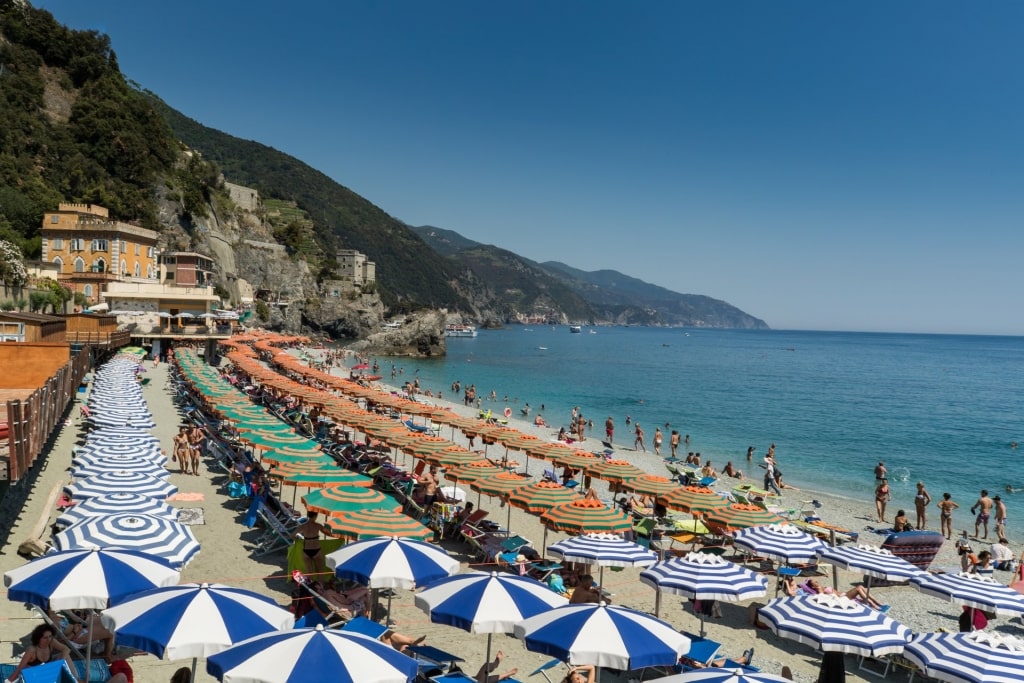
Monterosso Beach, Cinque Terre
After so much time among sarcophagi and the hush of museum spaces, head out into the Tuscan countryside and make a northerly pilgrimage to the coastal Cinque Terre.
The delicious contrast offered by traveling from one of the richest medieval republics to a collection of five isolated fishing villages is the perfect way to round off your two days in Florence. Once you’re transferred to the coastal town of La Spezia, you’ll take a scenic coach ride to the resort of Levanto through the rolling Ligurian hinterland.
At Levanto, you’ll hop onto a train to the first and largest of the Cinque Terre, Monterosso. You’ll be guided on a walking tour around Monterosso’s beaches, cliff-clinging residences, and fragrant orange groves before having time to look around yourself. Don’t fill up on gelato, as the tour offers pesto bruschetta paired with wine for refreshment.
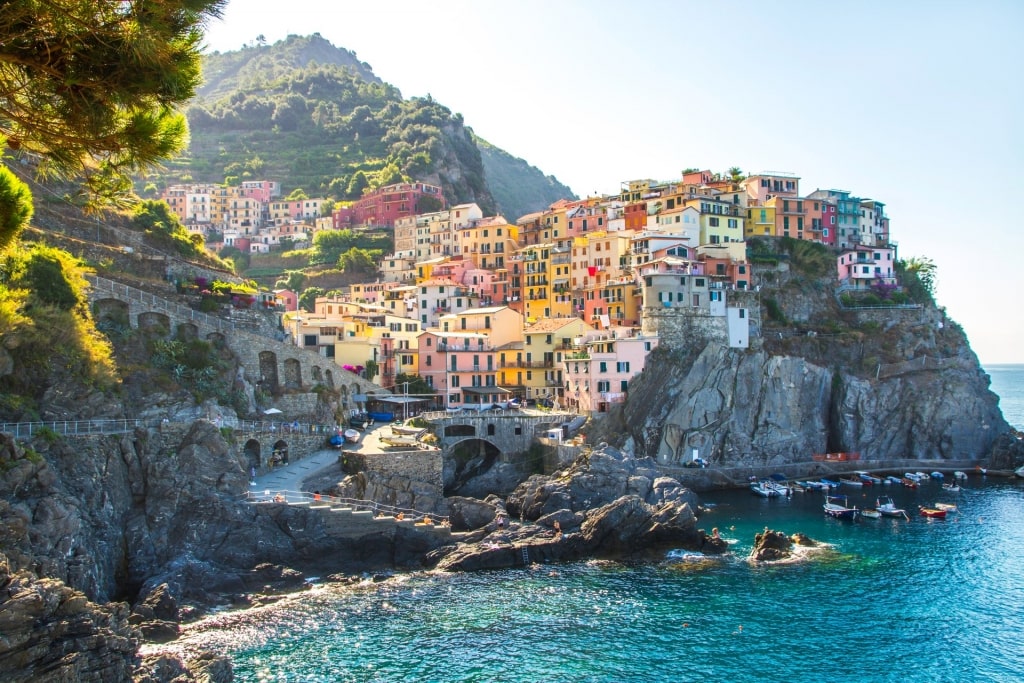
Manarola
Then it’s off to romantic Manarola and Rio Maggiore. As you contemplate the sea lapping at Riomaggiore’s age-worn quayside, you’ll be awestruck by Italy’s treasures within and without, natural and manmade.
Read: Best Things to Do in Cinque Terre
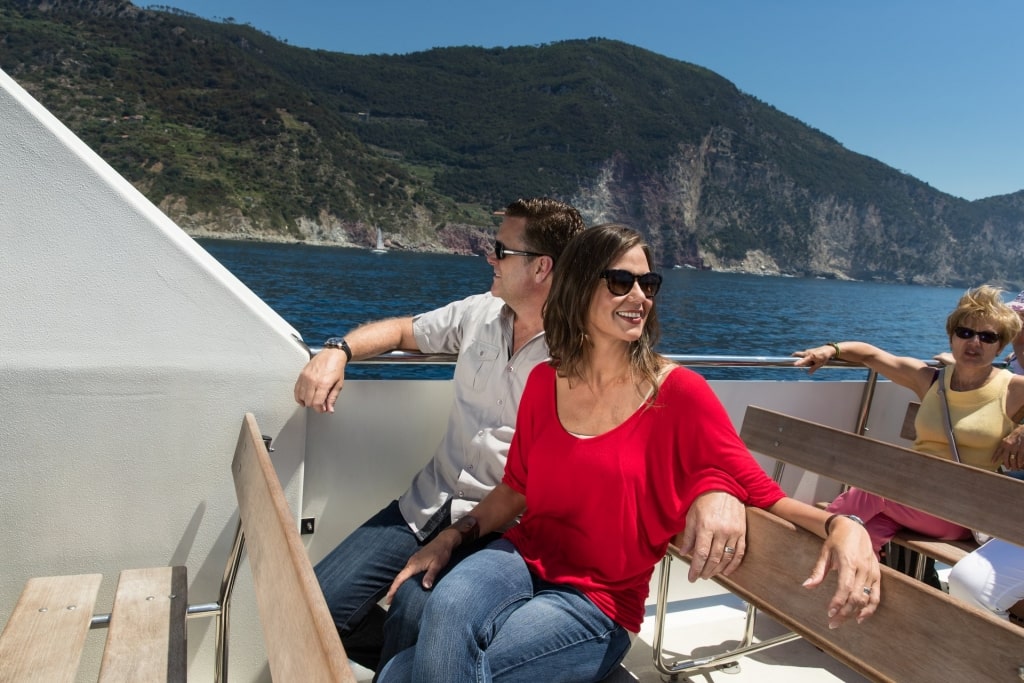
Florence
Experience all of these unforgettable experiences and more on a cruise to Italy. From world-renowned architecture and artworks to incredible culture and cuisine, Italy is deservedly one of the world’s most popular destinations.
Browse our cruise itineraries online and book an incredible Italian vacation today.
